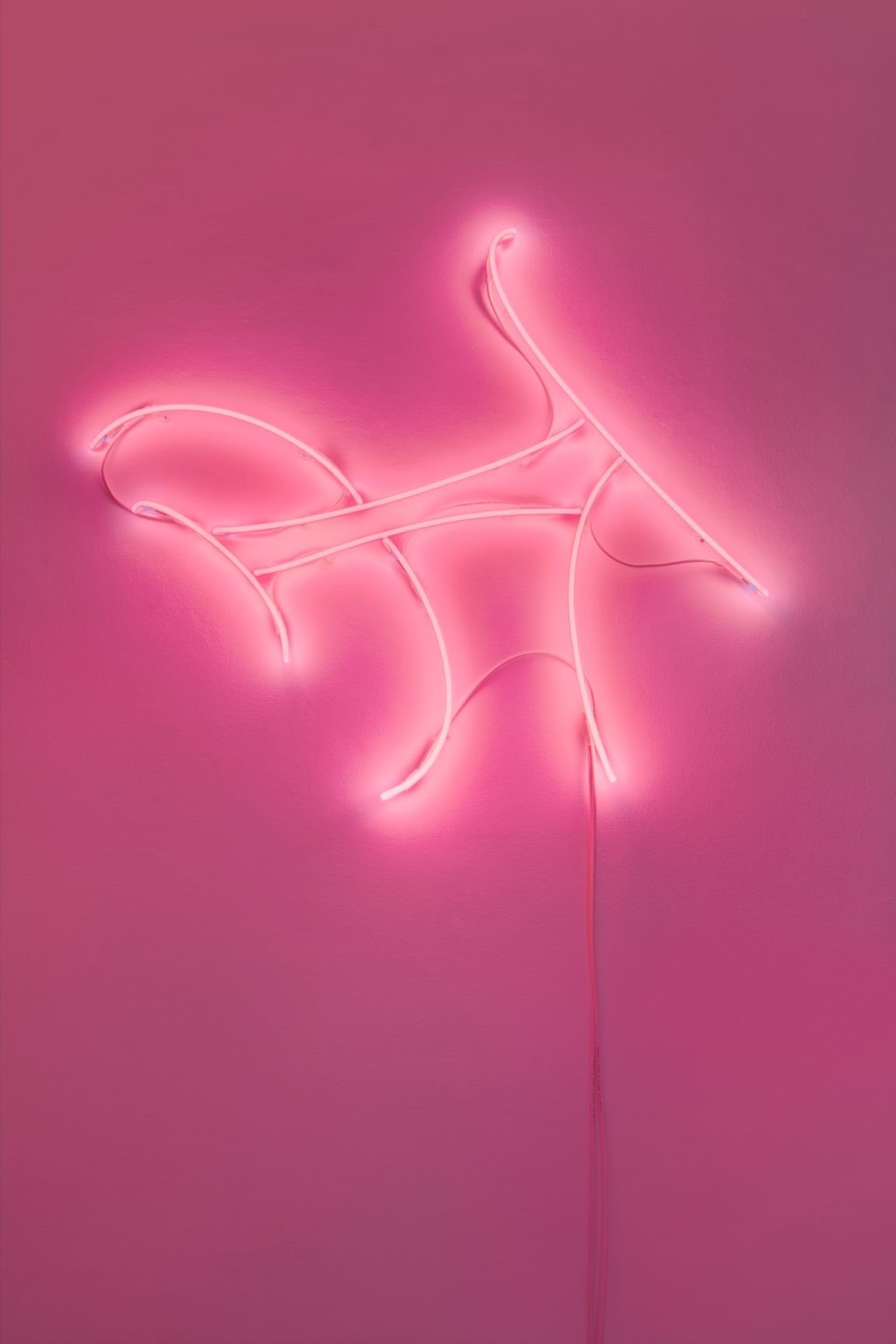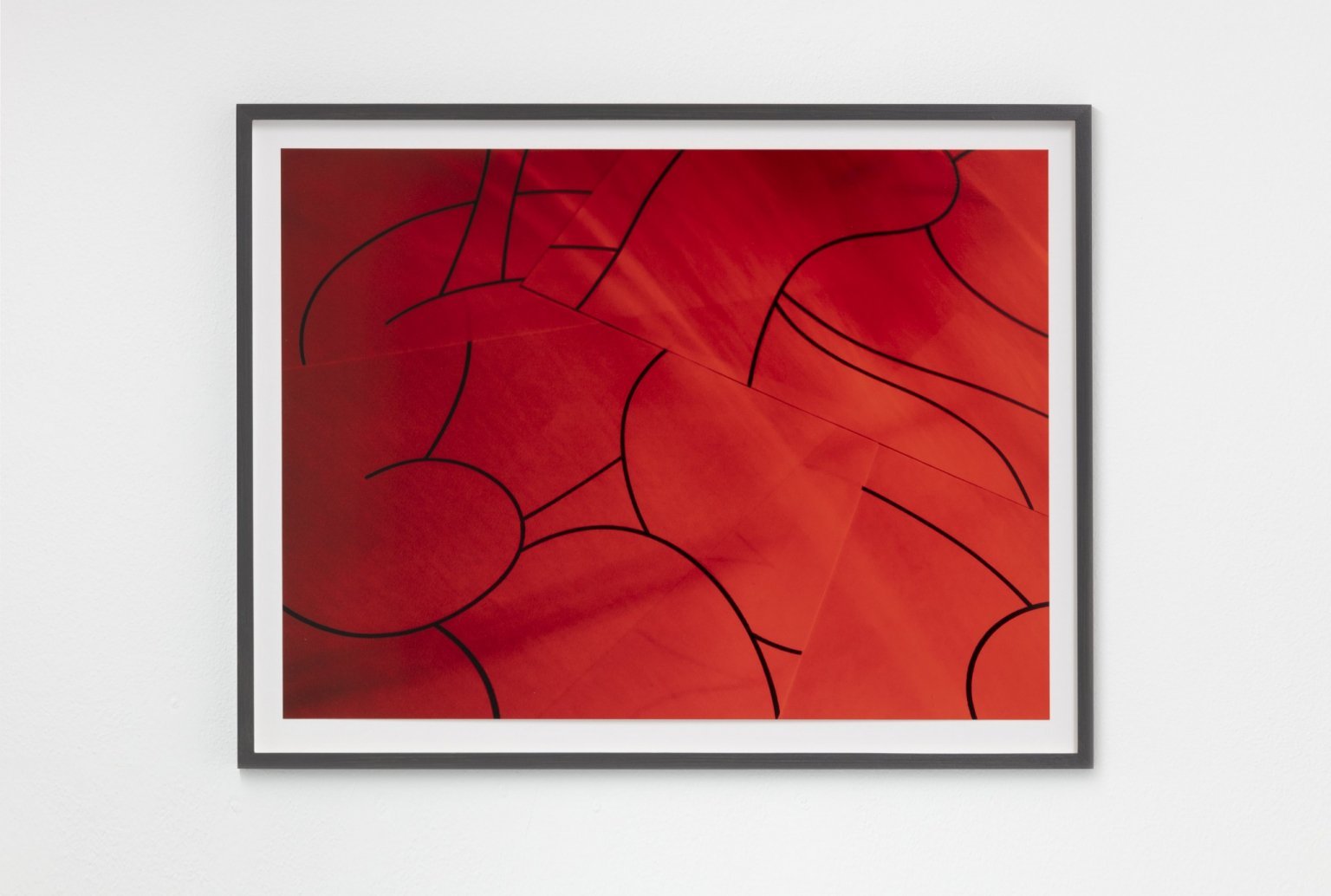Andrea Romano, Potsherds of Gazes (second book)
A 13 drawings book is the last chapter of a series Andrea Romano has dedicated to the way in which power manifests itself in social relations.
Drawing is normally seen as a mere departure point, a design tool to organize ideas that are clarified elsewhere, at a later time, and with other mediums. Think of notes, sketches, drafts, scribbles, preparations. For Andrea Romano, drawing is the conclusion instead. His work lies at the moment of contact between the tip of the pencil and the sheet of paper, when the idea takes shape from the meeting between two surfaces, one that rubs against the other, being consumed to leave a trace of itself. Thirteen of his drawings from 2019, collected in a book titled Potsherds of Gazes published this year, lead back to the first strokes with which Andrea Romano rendered details of an animated sitcom, a saga that just turned 60 and is now the longest-running in the United States after the Simpsons.

We are talking about the Flintstones, the parody of American society designed by William Hanna and Joseph Barbera, firstly broadcast on ABC on September 30, 1960. The series was aimed at an adult audience, and for this reason initially sponsored by a brand of cigarettes (the Winstons), which Fred and Barney smoked together to relax. Over the years, the comic charge of the cartoon has gradually faded, partly due to natural aging, partly because the society that Fred, Wilma, Barney and Betty represented no longer exists. Instead, the relations between the main characters remain intact, perhaps based on the theatrical model of Laurel & Hardy, or on the power relationship between two opposites that constantly take each other’s place: those who succeed quickly succumb, just to rise again a moment later.
Just like another master of drawing such as Pierre Klossowski, for Andrea Romano this medium is a way to investigate the power relations that exist between people, that is, social hierarchies and their very subtle and symbolic dynamics. However, if for Klossowski the starting point to investigate power is writing–think of his masterpieces The Living Currency, The Baphomet, and the trilogy dedicated to his wife Robert–for Andrea Romano everything starts and resolves in an intuition, projected in the extraction from a cartoon of the contact points between bodies. In this way Andrea Romano delves into a theme that is very dear not only to Klossowski, but also to the American sociologist Erving Goffman, who published The Presentation of Self in Everyday Life (1959) on the way in which people interact with each other in public space. Goffman uses the metaphor of the theater, claiming we are actors who adapt according to the scene and the other characters on stage, destined to represent ourselves with all possible means available, including make-up and costumes. In a more complex way, this is also what happens today in the digital dimension of social media.

In chapters XI, XII and XIII of The Betrothed, Alessandro Manzoni talks about the bread riots through the naive eye of Renzo. In order to describe the nature of the crowd, Manzoni refers to the categories of good and evil. In the novel, there is a representation of power in its moral and linguistic ambiguity, from acts of violence to manipulation hidden in apparently lovable gestures. It is the representation of a system that is strong with the weak and weak with the strong. A detail of an illustration by Francesco Gonin, directly instructed by Manzoni, reminds me of the isolated detail of a photograph in which an industrialist brings the workers on strike back to the factory with an apparently kind gesture…
Andrea Romano’s work on the contact of bodies was born in 2012 in the context of two group exhibitions: Io, tu, lui, lei at the Bevilacqua La Masa Foundation in Venice and Sotto la Strada, la Spiaggia at the Sandretto Re Rebudengo Foundation in Turin. They carried his interpretation of the passage by Alessandro Manzoni cited above. The first details from the Flintstones were engraved on wooden stools, suggesting that the contact should also be the one between yourself and the seat. The stools, which are titled Sugar, Coffee, Lemonade, Tea, Rum, Boom! were exhibited for the first time at the Bevilacqua la Masa Foundation and five years later in a group exhibition at Galerie Steinek in Vienna. The first drawings of this series appeared instead in 2013, on the occasion of the solo show at Fluxia. They are oriented as landscapes, accompanied by other groups of works. Together they delve into the concept of Doorkijkje, which gives the exhibition its title, referring to the perspective backgrounds inserted in the Flemish paintings beyond doors or windows to accentuate their depth. The idea of transforming drawing lines into vector files also dates back to this time, and so does their transformation into colored neon tubes, solidified architecture elements that are first exhibited in 2015 at the Milan Triennale and in a solo show at Gaudel de Stampa in Paris. Andrea Romano will present them again in 2017 for his solo show at Vistamare. In 2015, a first book with these elements, titled Potsherds and Gazes and published by Rawraw is released, followed by a second one called Potsherds of Gazes this year. It is printed in 100 copies and contains fourteen unpublished drawings, this time oriented as portraits. The originals are presented at the Pio Pico gallery in Los Angeles, along with two photographs, which constitute the last act of the series.

Andrea Romano, Potsherds of Gazes, 2020. Artist book. Offset print on cotton paper. Envelope: offset print on PVC. 14 pages. Cm 23 x 31. Print run 100. Printed by Paolo Nava, Milan. Photos by Andrea Rossetti. 
Andrea Romano, Potsherds of Gazes, 2020. Artist book. Offset print on cotton paper. Envelope: offset print on PVC. 14 pages. Cm 23 x 31. Print run 100. Printed by Paolo Nava, Milan. Photos by Andrea Rossetti. 
Andrea Romano, Potsherds of Gazes, 2020. Artist book. Offset print on cotton paper. Envelope: offset print on PVC. 14 pages. Cm 23 x 31. Print run 100. Printed by Paolo Nava, Milan. Photos by Andrea Rossetti. 
Andrea Romano, Potsherds of Gazes, 2020. Artist book. Offset print on cotton paper. Envelope: offset print on PVC. 14 pages. Cm 23 x 31. Print run 100. Printed by Paolo Nava, Milan. Photos by Andrea Rossetti. 
Andrea Romano, Potsherds of Gazes, 2020. Artist book. Offset print on cotton paper. Envelope: offset print on PVC. 14 pages. Cm 23 x 31. Print run 100. Printed by Paolo Nava, Milan. Photos by Andrea Rossetti. 
Andrea Romano, Potsherds of Gazes, 2020. Artist book. Offset print on cotton paper. Envelope: offset print on PVC. 14 pages. Cm 23 x 31. Print run 100. Printed by Paolo Nava, Milan. Photos by Andrea Rossetti.
Artist’s Notes
My focus is on the physical contact between humans and dinosaurs present in the scenes. As a sort of censorship technique, I isolate the actions of squeezing, throttling, pulling, stroking, inserting, trampling, with the aim of building a vocabulary of signs that, one step away from abstraction, allude to gestures as frivolous and sensual as they are violent.
The title of the series refers to the fragmentation, discovery and reconstruction of a certain artefact through sight; or rather, the way of looking through our memory, our culture, our feelings.
After a series of drawings on paper, performed as compositional studies of these signs, I wanted to translate the theme of physical contact into something spatial through neon tubes. The book published by Rawraw marks the transition from drawing on paper to neon.
In my last drawings, I take the original scenes from which I have extracted the details, showing almost all the actions between humans and dinosaurs. They are images that contain a predetermined narration. For this reason they seem to prompt more thought. These works are a sort of cover, or poster. They refer to the relationship between drawing and writing, to the different semantic values of the two languages.
The relationship between detail and whole, between abstract and figurative sabotage each other. They impose themselves on each other.

Inaccessibility of the Sign
The path we have tried to trace around this series of works is missing one part, the junction that connects Potsherds of Gazes to the rest of Andrea Romano’s practice. This element is the idea of perfection, here understood as a formal control of every detail and not as a response to a pre-existing canon, an attitude that Raphael mentioned in his famous letter to Baldassarre Castiglione. From a formal point of view, the sign is part of an approach that is psychological rather than formal. If people are actors, the same cannot be said of their works, which are immutable and untouchable. The sign is somehow always protected by a screen, which establishes a monumental absoluteness by making the sign inaccessible. Marble frames, Plexiglas, glass: they are part of the sign itself instead of replaceable accessories. This control is somehow programmed to travel across time and space.


January 31, 2022
